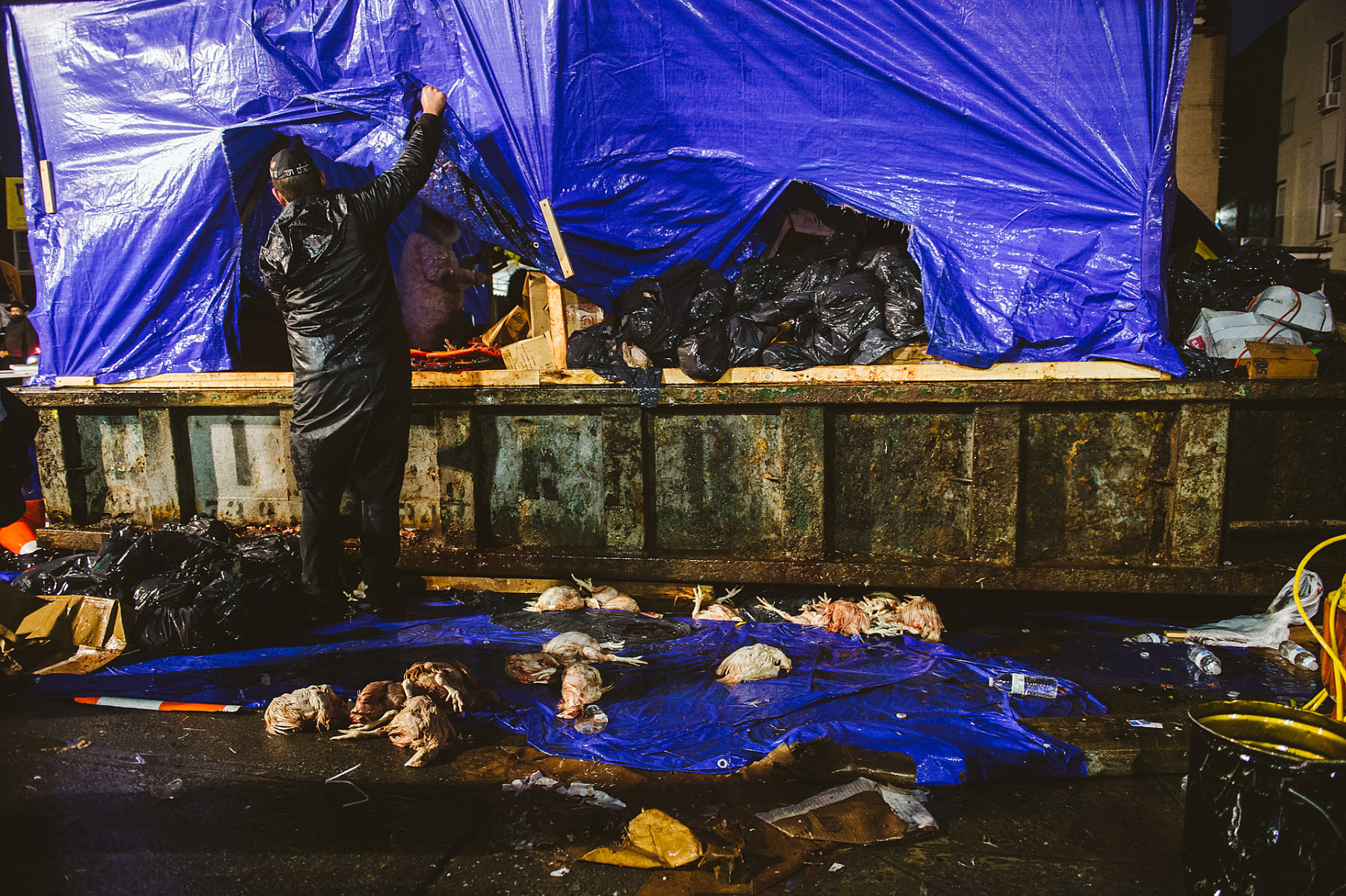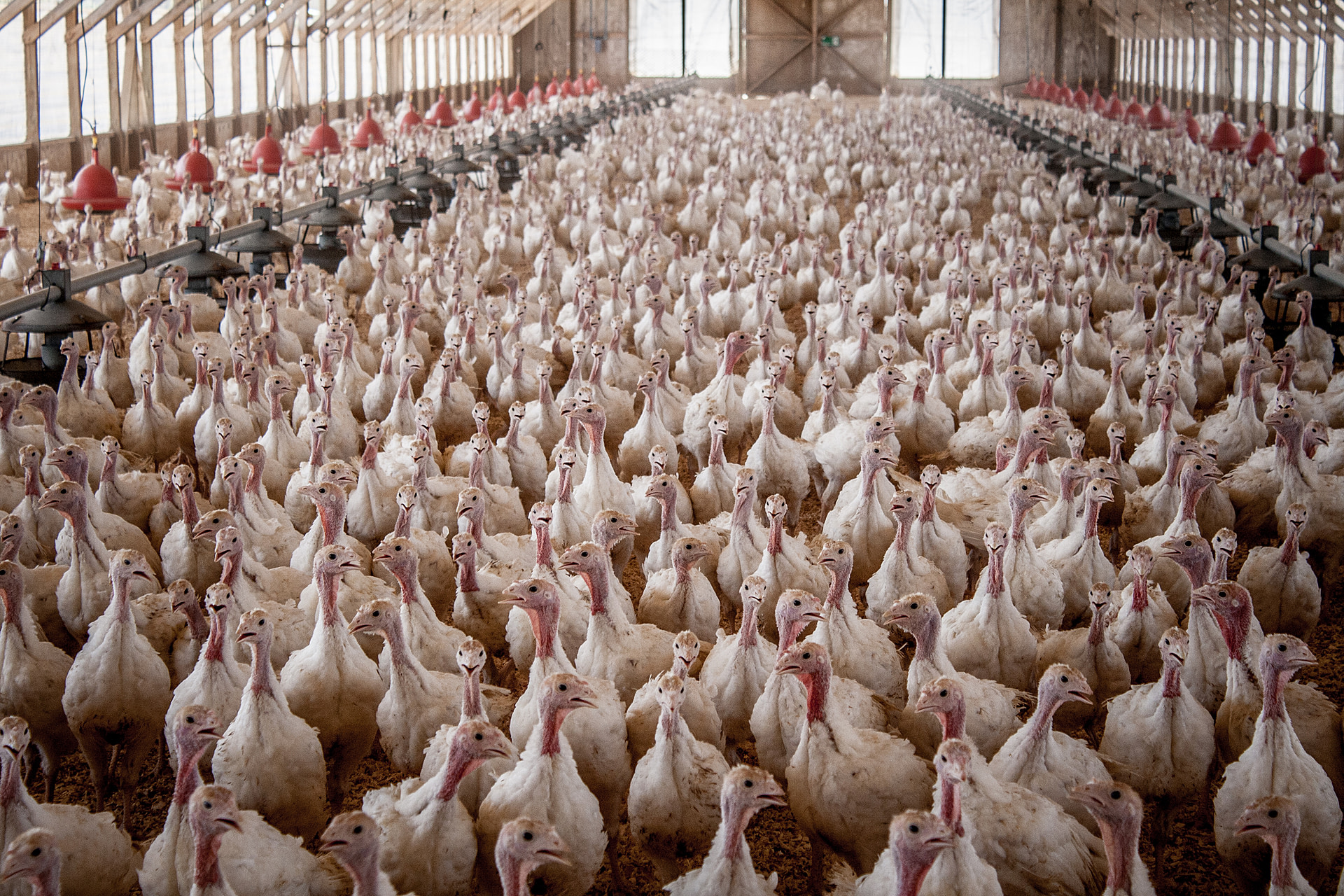Turkeys close to slaughter age are crowded into a shed with little room to move at a feedlot in Chile.
Gabriela Penela / We Animals
Earlier this month, Harvard Law School and New York University released a comprehensive report unveiling the extent of zoonotic disease threats from animal industries in the United States, and highlighting the US government’s lack of a thorough strategy to address these threats.
The report, Animal Markets and Zoonotic Diseases in the United States, is the first to comprehensively map networks of animal commerce that fuel zoonotic disease risk in the U.S. It analyzes 36 different animal industries, including fur-farming, the exotic pet trade, hunting and trapping, industrial animal agriculture, backyard chicken production, roadside zoos, and more, to assess the risks each poses of generating a large-scale disease outbreak.
”Covid has infected more than 100 million Americans and killed over a million of them. But the next pandemic may be far worse and might happen sooner than we think. The stakes are simply too high for the problem to be ignored.” — Ann Linder, Associate Director of Policy & Research with the Brooks McCormick Jr. Animal Law & Policy Program at Harvard Law School
This vital report features 50 visuals from We Animals photojournalists who are on the frontlines documenting animal industries around the globe.



























Zoonotic diseases account for approximately 60 percent of all known infectious diseases and 75 percent of new and emerging ones, according to data from the Centers for Disease Control and Prevention. The state and scale of animal industries in the US means it is particularly susceptible to outbreaks of zoonotic disease, as highlighted in the report’s key findings.
For example, the US produces larger numbers of pigs and poultry than almost any other country, both species carriers of influenza viruses; yet regulation on farms is poor to non-existent. Influenza viruses are widely considered the most likely to give rise to a large-scale human pandemic.
The US is also the world’s largest importer of both domestic animals and wildlife. The exotic pet trade imports millions of live wild animals into the US each year; most of these shipments are not screened for disease when they enter the country and these animals can be vectors of disease transmission.
According to Dr. Suresh Kuchipudi, an expert on zoonotic disease at the University of Pittsburgh School of Public Health, via a New York Times report, “the new report should change the narrative that spillover is a ‘foreign’ problem. The risk of disease transmission is not confined to a particular geography or cultural practice. It can happen wherever there is frequent wild or domestic animal and human interactions.”
It is collaboration and reports like this that bring about change for animals as a unified group working together internationally.
This report is part of a larger project to assess the zoonotic disease risks posed by animal industries in 15 countries. You can now read the full global report, Animal Markets and Zoonotic Disease Risk A Global Synthesis of a 15 Country Study.
Explore more visuals from this report.

